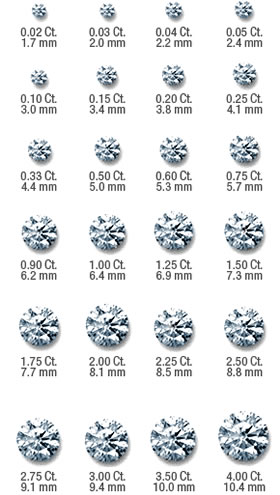DIAMOND EDUCATION ~ THE 4 C'S
The carat, the standard unit of weight measurement used for diamonds and gemstones, takes its name from the carob seed. Because these small seeds had a fairly uniform weight, early gem traders used them as counterweights in their balance scales. The modern metric carat, equal to 0.2 grams, was adopted by the United States in 1913 and other countries soon after.
Today, a carat weighs exactly the same in every corner of the world. Because even a fraction of a carat can make a considerable difference in cost, precision is crucial. In the diamond industry, weight is often measured to the hundred thousandths of a carat, and rounded to a hundredth of a carat. Since larger diamonds are more rare than smaller diamonds, diamond value rises exponentially with carat weight. For example, a 1.00 ct. diamond of a given quality is always valued higher than two 0.50 ct. diamonds of the same quality. A general rule of thumb is that a diamond of double the weight costs around four times more. Once cut, color, and clarity grade have been determined, the carat weight of a diamond can be easily established to fit within a budget.
Total carat weight (t.c.w.) is a phrase that represents the total weight of all diamonds or other gemstones in a piece of jewelry, when more than one gemstone is used. Diamond solitaire earrings, for example, are usually quoted in t.c.w., indicating the combined weight of the diamonds in both earrings.

© 2026 Julia Failey / Site Map / Security and Privacy
